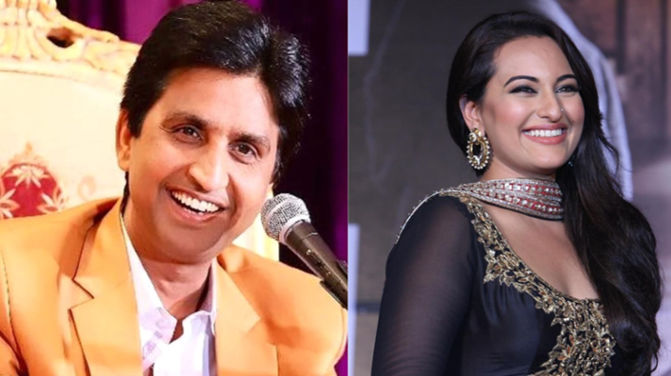In these exigent hours of Covid pandemic, the doctor-patient relationship has suddenly come in the eye of storm. The hapless patients are seen left at the mercy of doctors and hospitals. Allegations of medical negligence are surfacing day in and day out.
Medical profession is considered as one of the noblest professions as medical practitioners are at helm of life and death of the ailing. They are charged with the most sacred duty of saving the lives of patients through their reasonable care, skills, expertise, knowledge and experience. Since time immemorial, doctors are morally obliged to exhibit due diligence and care while extending treatment to their patients. They were once administered Charak’s oath (1000 BC) and the Hippocrates Oath (460 BC).
Nevertheless, unscrupulous persons are in every profession and medical is no exception. Whenever doctors have shirked their responsibilities that emerge from doctor-patient relationship, they are bound to face legal implications arising out of it. The doctor-patient relationship presupposes obligations and consequent liability of doctor to the patient. This relationship is based on – 1. Patient’s express or implied request for medical services & 2. Doctor’s acceptance of that request.
After acceptance of such a request, however, if a doctor fails to render proper services through reprehensible ignorance or negligence that follows injury or loss to the patient, then it amounts to medical negligence. He can be held liable in civil or criminal jurisdiction for the same depending on the nature of negligence.
Judiciary has been very vigilant when it comes to cases of medical negligence. It’s because medical negligence is a direct lethal blow to Article 21 i.e. Right to life and liberty. Furthermore, most often the loss suffered by patients and their relatives due to medical negligence is irreparable and irrepayble.
The infamous AMRI Hospital, Kolkata medical negligence case wherein Hon’ble bench of Supreme Court comprising Justices C.K. Prasad and V Gopala Gowda had awarded a whopping compensation of 5.96 crore to Mr.Kunal Shah, the husband of deceased Anuradha Shah proved to be nail in the coffin of all unscrupulous doctors who had reduced their hospitals to money-minting centers putting the lives of patients at risk. Three senior doctors of AMRI hospital namely Dr.Sukumar Mukherjee, Dr B.N.Halder, and Dr. Balram Prasad were also held liable for the fate of the patient. The judgment proved landmark as it reset the standard of medical care in India.
In NIMS, Hyderabad medical negligence case too, a patient named Prashant Dhanaka was awarded a record compensation of one crore who had faced the consequences of medical negligence in a surgery which led to irreparable damage to his spinal cord and he was made wheel-chair bound thereafter.
It’s worth mention that Supreme Court has already pronounced that medical negligence can also be tried under Consumer Protection Act, 1986. In the significant ruling in Vasanth Nair v Smt.V.P.Nair(1991), it has been reiterated that ‘patient is a customer’ and ‘medical assistance is a service’.
Doctors as professionals are under a duty to act when they accept a patient for treatment. In such cases, even their omission to do is bound to make them liable. A doctor is expected to follow generally accepted professional standards while performing his task. People who possess such superior ability or knowledge are held to a higher standard of care than those who don’t.
No doubt, a doctor doesn’t promise a particular result of cure to his patients, yet he is expected to possess the skill-sets, learning, and expertise of the profession commonly possessed by the members of the profession who are considered to be in a good standing. There are two standards to assess the credibility of standard of skills possessed by a doctor-
1. National Standard- Does the doctor have and use the equipment, knowledge, and experience that doctors have and use nationally?
2. Local Standard- Does the doctor have and use the equipment, knowledge and experience that doctors have and use locally where the doctor practices ?
If a doctor has promised a particular result of cure to his patient and it does not follow, then there is a breach of warranty or a breach of contract action. It’s irrespective of the fact that doctor was not negligent when performing the services during treatment. An opinion concerning a likely possible result of a treatment does not constitute a promise or guarantee.
A doctor and patient share fiduciary relationship. He is also not an infallible person like all of us, yet the degree of skill exercised by him is expected to be of reasonable competence, if not of highest level in that branch which he practices. There is a duty of care which a doctor owes towards his patient. If there is breach of duty then under certain circumstances, it would amount to negligence. The consequences of such negligence may be civil or criminal.
The term ‘negligence’ though not defined anywhere in the code, yet ‘good faith’ has been defined in Section 52 of Indian Penal Code,1860. It reads as- “Nothing is said to be done or believed in good faith which is done or believed without due care and attention. A doctor is expected to do everything related to his patient during treatment in ‘good faith’. So a negligent act is contrary to good faith. Thus, it was held in Mahadev Prasad Kaushik v. State of U.P. AIR 2009 SC 125 that ‘negligence is omission to do something which a reasonable man, guided upon those considerations which ordinarily regulate the conduct of human affairs would do, or doing something which a reasonable and prudent man would not do’.
In Jacob Mathew v State of Punjab (2005) 6SCC 1, the supreme court bench of CJI R.C.Lahoti, Justice GP Mathur, and Justice PK Balasubramanyam had dealt the issue of liability of medical professionals for negligence under civil and criminal law. The case was related to CMC hospital , Ludhiana wherein a patient was admitted with difficulty in breathing. Dr. Jacob Mathew and Dr. Allen Joseph were alleged to have put empty Oxygen cylinder to the patient. The son of patient had somehow managed to get another gas cylinder, but the doctors failed to make gas cylinder functional in time which had costed the life of patient.
The JMFC, Ludhiana had framed charges under section 304 A of IPC,1860 against these two erring doctors. The duo had filed a petition in the High Court to quash the FIR, but it was dismissed. An appeal to Supreme Court was thus moved by special leave.
The apex court had held that- it is the amount of damages incurred which is determinative of the extent of liability in tort, but in criminal law, it is not the amount of damages, but the amount and degree of negligence that is determinative of liability. In criminal negligence, inter alia, Mens Rea is an essential ingredient. To hold the existence of criminal negligence, the rashness has to be of such a degree as to amount to taking a hazard knowing that the hazard was of such a degree that injury was most likely imminent. The grossness or degree that distinguishes a negligence ‘actionable in tort’ and a negligence that is ‘punishable in crime’ is that it has to be of a very high degree. Thus it’s the ‘degree of negligence’ plus ‘Mens Rea’ test that is required to make medical acts as criminally negligent.
Justice R.C.Lahoti ruled in this case that – Negligence in the context of medical profession necessarily calls for a treatment with a difference. So long as the doctor follows a practice acceptable to the medical profession of that day he cannot be held liable for negligence merely because a better alternative course or method of treatment was available or simply because a more skilled doctor would not have chosen to follow or resort to that practice or procedure which the accused followed. It was thus held that a case of criminal negligence was not made out against doctors under 304 A of IPC, 1860. The hospital was though held liable in civil law.
In Syed Akbar v. State of Karnataka(1980) 1 SCC 30, it was ruled that where negligence is an essential ingredient of an offence, the negligence to be established by the prosecution must be culpable or gross and not a negligence merely based upon an ‘error of judgment’.
The Bolam Test of Medical Negligence as set out in Bolam v Friern Hospital Management Committee(1957), 2 ALL ER 118 also remains a traditional test to determine the culpability of a medical practitioner. It states that ‘a doctor is not negligent if what he has done would be endorsed by a responsible body of medical opinion in the relevant specialty at the material time. This test has been but criticized to be too protective to clinical staff. On the top of it, it doesn’t permit judges to choose between competing expert views.
The doctors can be charged to commit a ‘battery’ if they make physical contact with any part of the patient’s body without his consent. They must obtain an ‘informed consent’ from the patient or the person who is in charge of patient. Moreover, the patient must be informed of the risks associated with the treatment that was rendered. Failure to inform the patient about the probable risks involved during treatment/operation prevents him from being able to make an intelligent and considered decision on what treatment to seek or whether to have an operation.
Hospitals often use consent forms for providing information as well as avoiding liability. In Samira Kohli v Dr. Prabha Manchanda case, it was held by apex court that surgical removal of uterus and ovaries from the appellant’s body who was having menstrual problems without her ‘informed consent’ was an unauthorized invasion and interference with the appellant’s body. This had amounted to tortious act of assault and battery and therefore deficiency in service. A doctor can however at times give treatment to patient without his consent depending on factors such as seriousness of patient’s condition, availability of time, extent of emergency, et cetera.
It’s imperative to understand that even making out a case against a doctor under 304 A i.e. causing death by negligence, the two elements either of which or both may be proved to establish guilt are ‘rashness’ and ‘negligence’. Such a negligence and rashness must be attributable to state of mind to be made punishable. Section 304 A provides for cases where death is caused by doing a rash or negligent act which doesn’t amount to culpable homicide not amounting to murder within the meaning of section 299 or culpable homicide amounting to murder under Section 300 of IPC. Thus, Section 304 A excludes all the ingredients of Section 299 as well section 300.
304-A applies to those cases where there is no intention to cause neither death nor knowledge that the act in all probability will cause death. It applies to only such acts which are rash and negligent. If doctor is found guilty under 304A, he can be punished for imprisonment for 2 years and fine. The other Sections of IPC such as 52, 80,81, 83,88,90,91,92, 337 and 338 also cover acts of medical malpraxis.
Moreover, the burden of proving medical negligence of doctor is upon the complainant/ prosecution. Meaning thereby, he has the task of convincing the court that his version of facts is correct one.
The ‘expert opinion’ plays a crucial role in deciding medical negligence of a doctor.(Sethuraman Subramaniam Iyer v Triveni Nursing Home and anr.,1998)
The doctor and patients are often at loggerheads. No doubts it’s important to protect the doctors from floodgates of medical claim as mankind has received greater benefits from their services than their cost of errors we’ve borne. The medical fraternity also needs to adhere to the Code of Medical Ethics laid down by MCI under Indian Medical Council Act,1956. The Act also consists of chapters relating to disciplinary actions for professional misconduct. The movies like ‘Ankur Arora Case Files’ and ‘Deadline- Sirf 24 Ghanta’ acted as eye opener for unscrupulous doctors recently.
According to Justice R.C. Lahoti, negligence in the context of medical profession necessarily calls for a treatment with a difference. So long as the doctor follows a practice acceptable to the medical profession of that day he cannot be held liable for negligence merely because a better alternative course or method of treatment was available or simply because a more skilled doctor would not have chosen to follow or resort to that practice or procedure which the accused followed. It was thus held that a case of criminal negligence was not made out against doctors under Sec 304 A of IPC, 1860. The hospital was though held liable in civil law.







